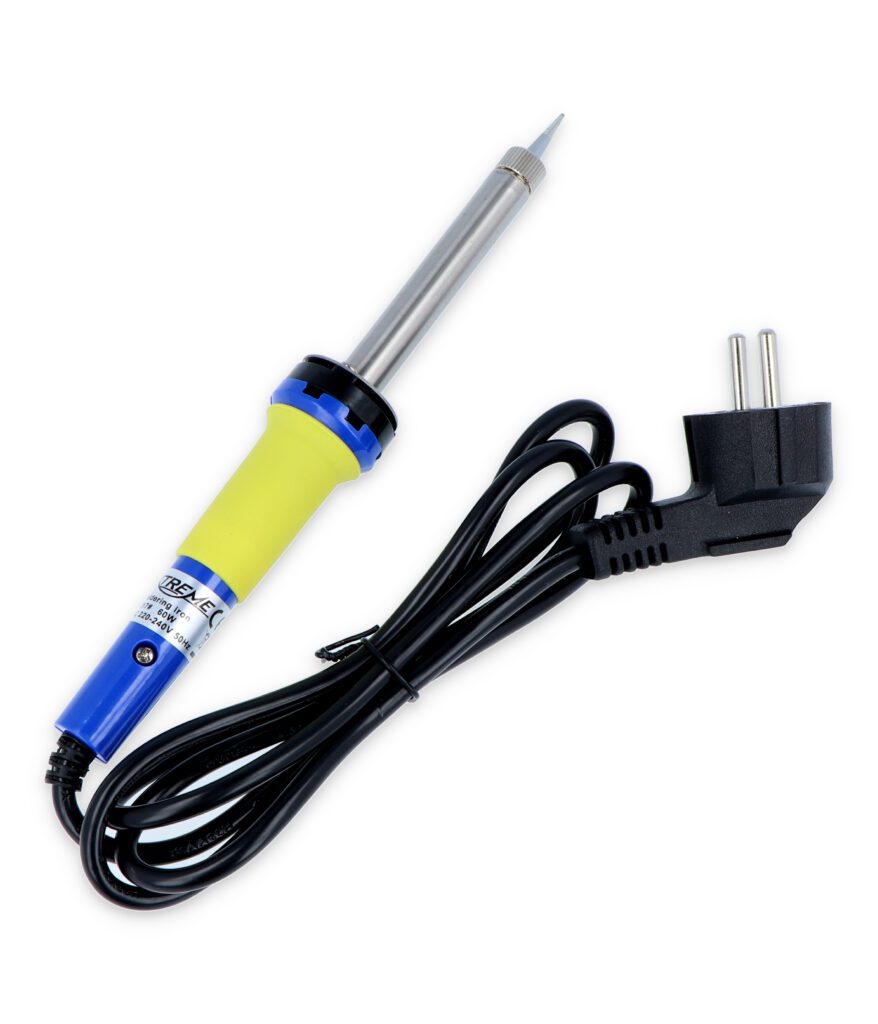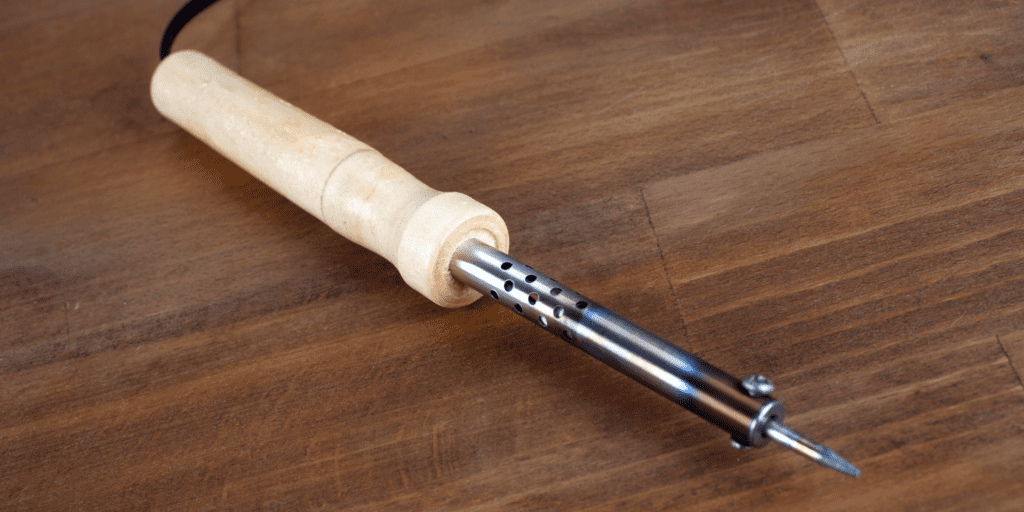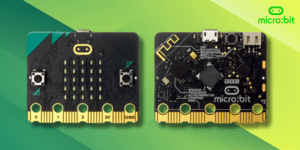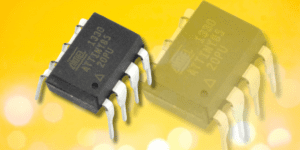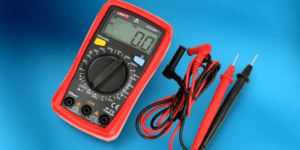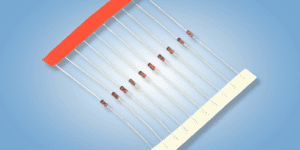Spis treści:
The flask soldering iron is an indispensable tool in the workshop of every electronics technician and do-it-yourselfer. Learn how it works and in what situations to use it.
Construction and principle of operation of the flask soldering iron
The main part of the flask soldering iron is the flask, which is usually made of heat-resistant materials such as ceramic or metal. Inside the flask is a heating element that is electrically powered. It is responsible for heating the tip of the soldering iron to a temperature that allows the solder to melt.
The tip of the soldering iron, usually made of copper or stainless steel, is the component that directly contacts the material to be soldered. The tips vary in shape and size, allowing you to choose the most suitable tool for a particular task. Some soldering irons allow you to change tips, which increases their versatility.
The control panel is another important element. In modern models of flask soldering irons, you can find various functions, such as temperature control, timer and standby indicator. This gives the user full control over the soldering process.
Equally important is the cooling system, especially in professional models. This can be simple passive cooling or more advanced systems with a fan.
The principle of the flask soldering iron is relatively simple. When connected to the power supply, the heating element begins to heat the tip of the soldering iron. When it reaches the right temperature, you can proceed with soldering.
Understanding the design and operation of a flask soldering iron is the first step to its effective and safe use. This allows us to make precise and durable connections.
Different types and uses of the flask soldering iron
The variety of models of flask soldering irons on the market is quite large. Different types of these tools are tailored for specific applications. What exactly is the difference between the two?
Soldering irons for amateurs and professionals
Simple, small and relatively inexpensive soldering irons are available for those just starting out. They usually do not have advanced features, but are sufficient for simple tasks such as connecting wires or repairing small electronic devices. Professional models offer advanced features such as precise temperature control, interchangeable tips or even digital displays.
Temperature-controlled soldering irons
Some tasks require precise temperature control. In such cases, it is worth investing in a temperature-controlled soldering iron. This allows the tool to be adapted to a variety of materials and applications – from delicate connections in electronics to thicker metal parts.
Battery operated soldering irons and gas soldering irons
In addition to traditional electric soldering irons, there are also battery-powered and gas-powered models. They are ideal for mobile applications where access to electrical power is limited. Gas soldering irons are often used in installation, repair and other outdoor work.
Examples of applications of flask soldering irons
- Electronics repair – Cob soldering irons are essential for repairing various electronic devices, such as TVs, computers and smartphones.
- DIY projects – For DIYers and hobbyists, soldering irons are a key tool in completing their own projects – from simple electronic circuits to advanced robots.
- Electrical installations – In electrical installation work, flask soldering irons are used to join wires and secure connections.
- Automotive – In auto repair shops, soldering irons are used to repair electrical systems such as light systems and audio systems.
- Jewelry – In some cases, flask soldering irons are used in jewelry making to join small metal parts, such as chains or pendants.
- Modeling – in model building, both railroads and airplanes, soldering irons are used to join and repair delicate parts.
Tips for beginners - how to choose the right soldering iron?
If you’re just getting started with soldering, choosing the right soldering iron can be a challenge. Various models are available on the market, each with its own set of features and specifications. Here are some tips to help you make an informed choice.
- Think about your needs – before buying, it is worth considering what applications you will need the soldering iron for. Do you plan to solder delicate electronic components or thicker pieces of metal? The answer to this question will help you narrow down your choices.
- Adjustable temperature – for beginners, the ability to adjust the temperature is very useful. This will allow you to adapt the tool to different materials and tasks, which is especially important if you are just learning to solder.
- Pay attention to the quality of workmanship – don’t skimp on quality. Cheap soldering irons can be less durable and less precise, which can generate additional costs in the long run for repair or replacement of the tool.
- Check reviews and testimonials – it’s also a good idea to read other users and professional reviews before buying. They can provide valuable information on the durability and functionality of various models.
- Think about a starter kit – some soldering irons are sold in starter kits that also include other necessary equipment, such as a stand, cleaning sponge or even pieces of solder. This is a great option for beginners.
Safety and good practices during soldering
Soldering, while a technical process, also requires certain safety rules and good practices.
Make sure your workplace is well ventilated. The fumes released during soldering can be harmful to health. Therefore, if possible, use a fan or an extraction system.
Always use appropriate personal protective equipment, such as safety glasses and gloves. This will minimize the risk of burns or eye damage from accidental solder splashes.
Use a soldering iron stand to avoid accidental burns on the work surface. Also use a sponge or special cleaning station to regularly clean the tip of the soldering iron.
Safety during soldering is an issue that cannot be taken lightly. By following the above rules and tips, you will minimize the risk of error and increase your chances of successfully and safely completing the task.
How useful was this post?
Click on a star to rate it!
Average rating 5 / 5. Vote count: 1
No votes so far! Be the first to rate this post.

